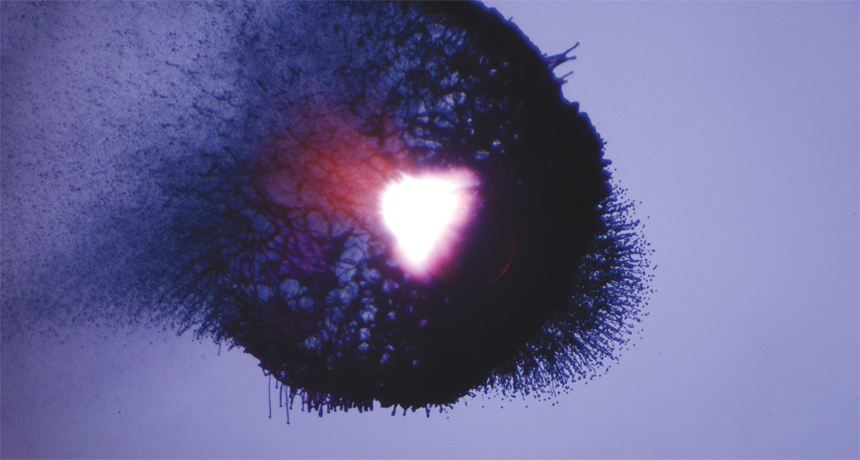Assaulting ink drops for science
Studying laser-driven explosions of ink could lead to faster computers

POW A pulse of laser light obliterates a free-falling ink drop in an image from an award-winning video in the American Physical Society’s 2014 Gallery of Fluid Motion competition.
Courtesy of H. Gelderblom & A. Klein/University of Twente